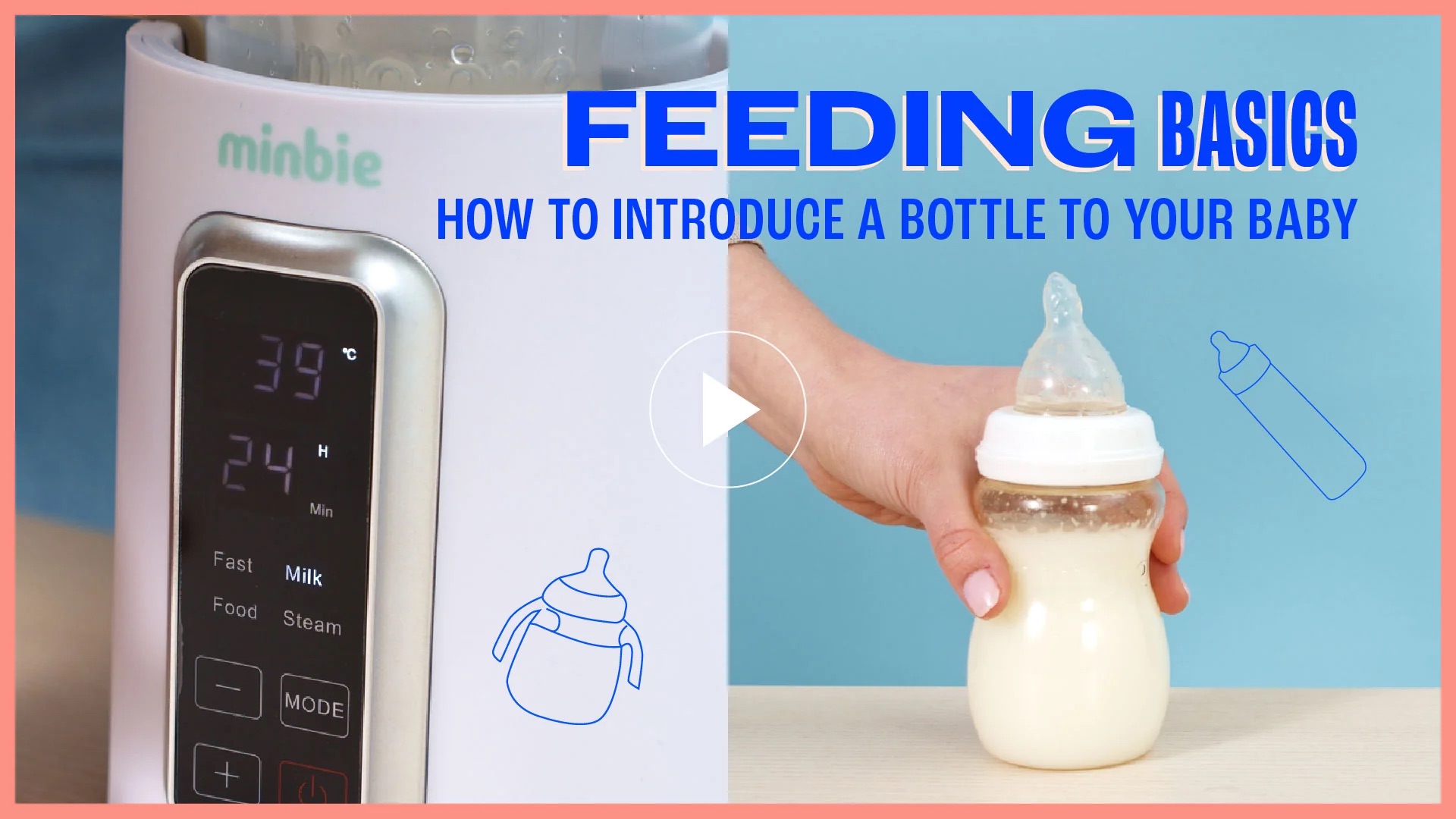When to introduce a bottle is unique for every parent and child. In some cases a bottle may be introduced on day one. In other cases it might be 6 or 12 months down the line. Generally the younger the baby the more easily they will adapt to bottle feeding. It is generally around 12 weeks onwards that Joelleen Winduss Paye (IBCLC) Lactation Consultant, sees babies refuse a bottle. She notes that it is really important that the baby feels safe and stress free as they try a new way of feeding. Her top tip? “Offer lots of reassurance and smiles and stop if anyone gets stressed, try again another time. I like to allow the baby to first get familiar with the teat by letting them play with it, and then dipping it in milk, and then for the very first bottle a very small amount of milk can be helpful.”
Why you might introduce a bottle
- If you’re keen to get your baby used to a bottle so that your partner can help with overnight feeds.
- If you’d like to go back to paid work and you’ll need to express or provide formula for a carer to feed your baby.
- If your baby is unable to sufficiently feed from the breast.
- If you’re keen to transition your baby from breast to bottle within a certain period of time and you simply want them to be comfortable and familiar feeding from a bottle.
Watch our tutorial here:

Paced Bottle Feeding and choosing the right bottle and teat
Some newborns take to a bottle easily, some can refuse it after a few months. Flow rate is really important when it comes to your baby learning to take a bottle, particularly in the early days. You want to avoid little babies drinking too fast, and older babies getting frustrated at slow flowing milk. Paced Bottle Feeding is a method of feeding with a bottle that allows the baby to have a greater sense of control, like they would with a breast. “This method is based on how the bottle and baby are positioned to allow your baby to drink at their own pace, and take breaks as they please” says Joelleen.
Here’s what to do:
- Keep your baby well supported (behind the neck and shoulders) and upright, the bottle horizontal. This removes gravity from the equation and, most importantly, lets your baby rest when they wish.
- Rest the tip of the teat on your baby's lips. Wait for them to invite the bottle into their mouth, your baby will take the teat when ready.
- When your baby starts to suck, tilt the bottle to a horizontal angle (parallel to the floor). The teat will be about half filled with milk.
- Let your baby continue to suck until they take a natural pause.
- Tilt the base of the bottle downwards, still keeping the teat in their mouth.
- Let your baby have a little rest, then repeat until your baby has finished.
To keep pace with their age and stage, if you’re giving a bottle to a new baby aged 0-3 months, choose a ‘slow flow’ teat so milk flows at the right rate for their suction. For a baby aged 3-6 months, choose a ‘medium flow’ teat, which will speed up the rate they can suck milk out, meeting their demand and development.
If you’d like to opt for a mix of a bottle and the breast, Joelleen’s recommendation is to breastfeed first before offering the bottle as an alternative. In efforts to maintain a good supply, try and avoid gaps of longer than 6 hours without pumping or breastfeeding.











